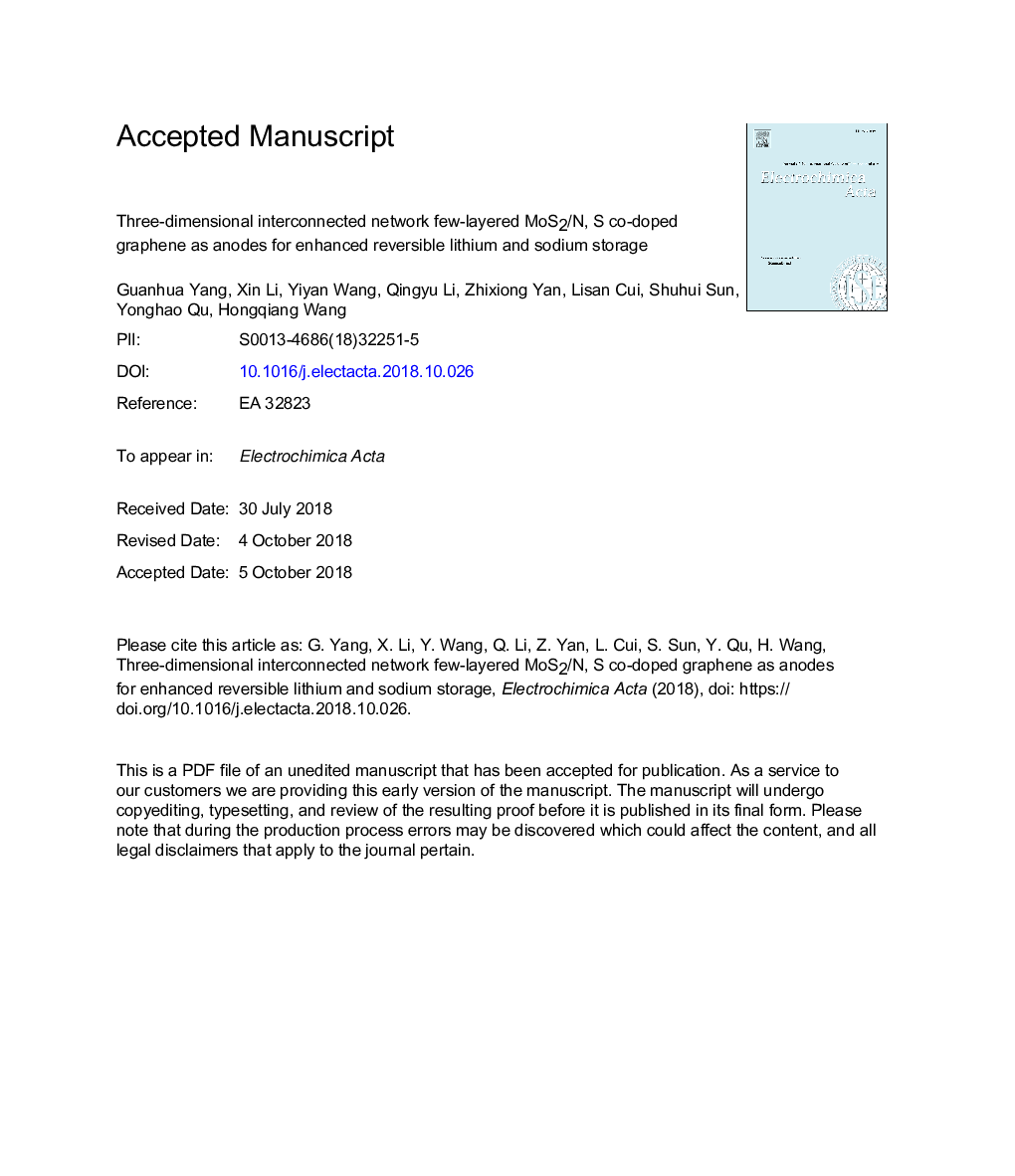| Article ID | Journal | Published Year | Pages | File Type |
|---|---|---|---|---|
| 11008101 | Electrochimica Acta | 2019 | 13 Pages |
Abstract
Rational design of efficient and durable anode materials is particularly momentous for high-performance lithium-ion batteries (LIBs) and sodium-ion batteries (SIBs). According to this concept, an effective strategy to prepare MoS2/N, S co-doped graphene by electrochemical exfoliation combining hydrothermal route is presented. Due to N and S atoms co-doping to graphene sheets, the three-dimensional interconnection of few-layered MoS2 and graphene, which contribute to relieving the restacking of the two components, accelerating the electrons transport and improving Li/Na storage capacity. As an anode in LIBs, the MoS2/NSG-AG demonstrates an up to reversible capacity of 1012â¯mAh gâ1 after cycling 300 times at 0.5â¯Aâ¯gâ1 and good rate performance with a capability of 1300.7, 1215.2, 1106.3, 1005.5, 892.7 and 727.7â¯mAh gâ1 at 0.1, 0.2, 0.5, 1.0, 2.0 and 4.5â¯Aâ¯gâ1, respectively. Furthermore, it delivers a maximum energy density of 890â¯Wh kgâ1 along with the power density of 130â¯Wâ¯kgâ1. Meanwhile, when used in SIBs, it displays a good reversible capacity of 320.9â¯mAh gâ1 after cycling 500 times at 0.5â¯Aâ¯gâ1. The prominent electrochemical performance could be due to the three-dimensional network formed by interconnection of MoS2 and graphene, co-doping of N and S, considerable surface area and rich mesoporous as well as the expanded layer spacing of graphene and MoS2. Therefore, this is a facile strategy to obtain high-performance hetero-structured anode and make it great potential applications in LIBs and SIBs.
Related Topics
Physical Sciences and Engineering
Chemical Engineering
Chemical Engineering (General)
Authors
Guanhua Yang, Xin Li, Yiyan Wang, Qingyu Li, Zhixiong Yan, Lisan Cui, Shuhui Sun, Yonghao Qu, Hongqiang Wang,
